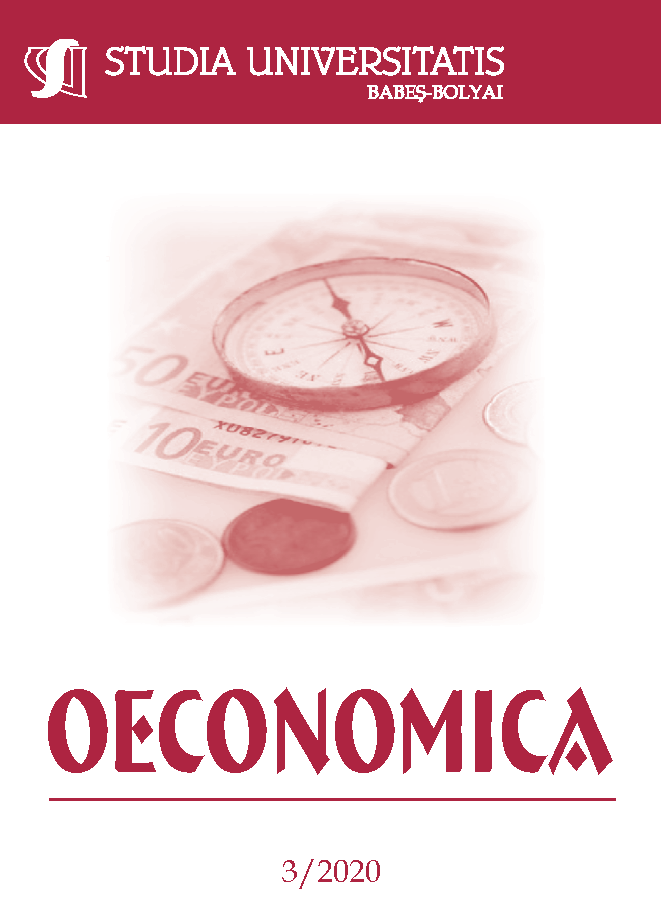MICROECONOMIC FOUNDATION OF THE PHILLIPS CURVE
DOI:
https://doi.org/10.2478/subboec-2020-0012Keywords:
Phillips Curve, Microeconomic foundation, Overlapping generations model, Monopolistic competitionAbstract
It is an important problem to derive negative relation between the unemployment rate and the inflation rate, that is, the Phillips curve without market imperfection. We derive the Phillips curve using an overlapping generations model under monopolistic competition. We consider the effects of exogenous changes in labor productivity. An increase (decrease) in the labor productivity in a period induces a decrease (increase) in the employment, an increase (decrease) in the unemployment rate and a falling (rising) in the price of the goods in the same period. Then, given the price in the previous period the inflation rate falls (rises). This conclusion is based on the premise of utility maximization of consumers and profit maximization of firms. Therefore, we have presented a microeconomic foundation of the Phillips curve.
JEL classifications: E12, E24, E31
References
Calvo, G. A. (1983) Staggered prices in a utility-maximizing framework. Journal of Monetary Economics, 12, 383-398.
Erceg, C., Henderson D. and A. Levin (1998) Trade-offs between inflation and output-gap variances in an optimizing-agent model, International Finance Discussion Papers, Board of Governors of the Federal Reserve System, No.627.
Erceg, C., Henderson D. and A. Levin (2000), Optimal monetary policy with staggered wage and price contracts, Journal of Monetary Economics, 46, 281-313.
Lucas, R.E. Jr. (1972). Expectations and the neutrality of money. Journal of Economic Theory, 4, 103-124.
Mankiw, N. G. and Reis, R. (2002). Sticky information versus sticky prices: a proposal to replace the new Keynesian Phillips curve, Quarterly Journal of Economics, 117, 1295-1328.
Otaki, M. (2007) The Dynamically Extended Keynesian Cross and the Welfare-Improving Fiscal Policy. Economics Letters, 96, 23–29.
Otaki, M. (2009) A Welfare Economics Foundation for the Full-Employment Policy. Economics Letters, 102, 1–3.
Otaki, M. (2011) Fundamentals of the Theory of Money and Employment (Kahei-Koyo Riron no Kiso (in Japanese). Keiso Shobo.
Otaki, M. (2015) Keynesian Economics and Price Theory: Re-orientation of a Theory of Monetary Economy, Springer.
Otaki, M. (2016) Keynes’s General Theory Reconsidered in the Context of the Japanese Economy. Springer.
Otaki, M and M. Tamai (2012) A Microeconomic Foundation for the Phillips Curve under Complete Markets without any Exogenous Price Stickiness: A Keynesian View, Theoretical Economics Letters, 2, 482-486.
Taylor, J. (1979) Staggered wage setting in a macro model. American Economic Review, 69, 108-113.
Taylor, J. (1980) Aggregate dynamics and staggered contracts. Journal of Political Economy, 88, 1-23.
Woodford, M. (2003) Interest and Prices, Princeton University Press.
Downloads
Published
How to Cite
Issue
Section
License
Copyright (c) 2020 Studia Universitatis Babeș-Bolyai Oeconomica

This work is licensed under a Creative Commons Attribution-NonCommercial-NoDerivatives 4.0 International License.






